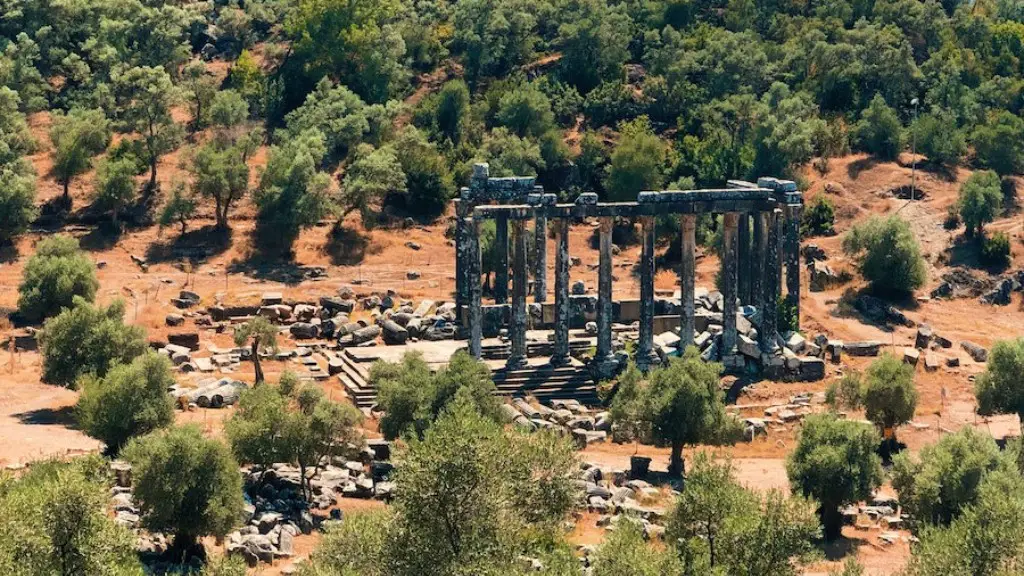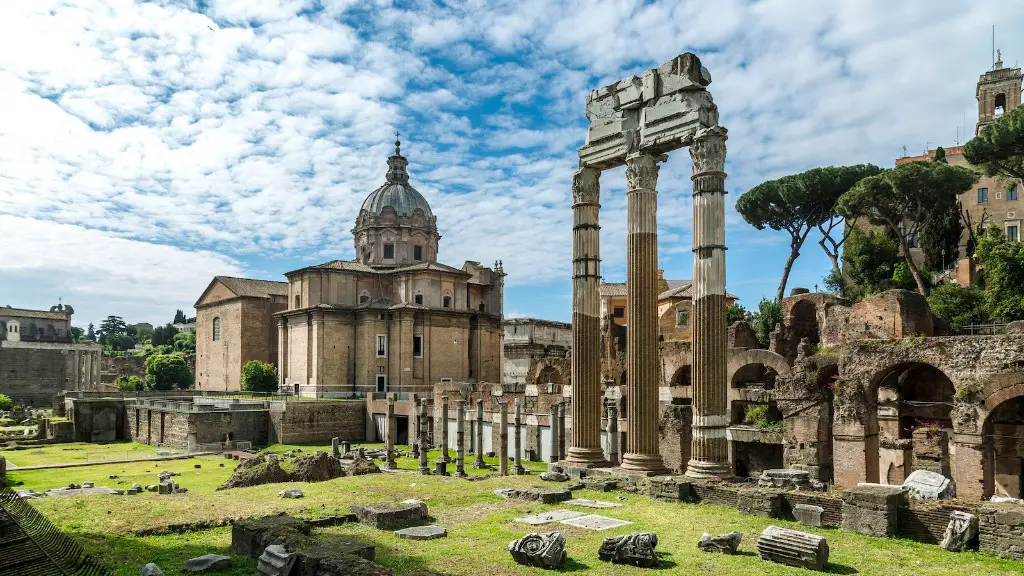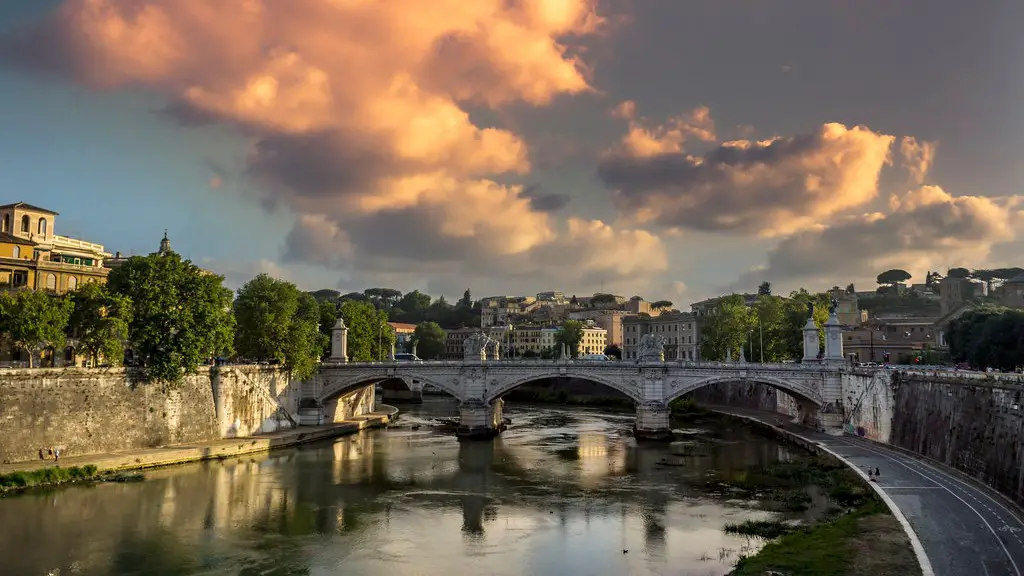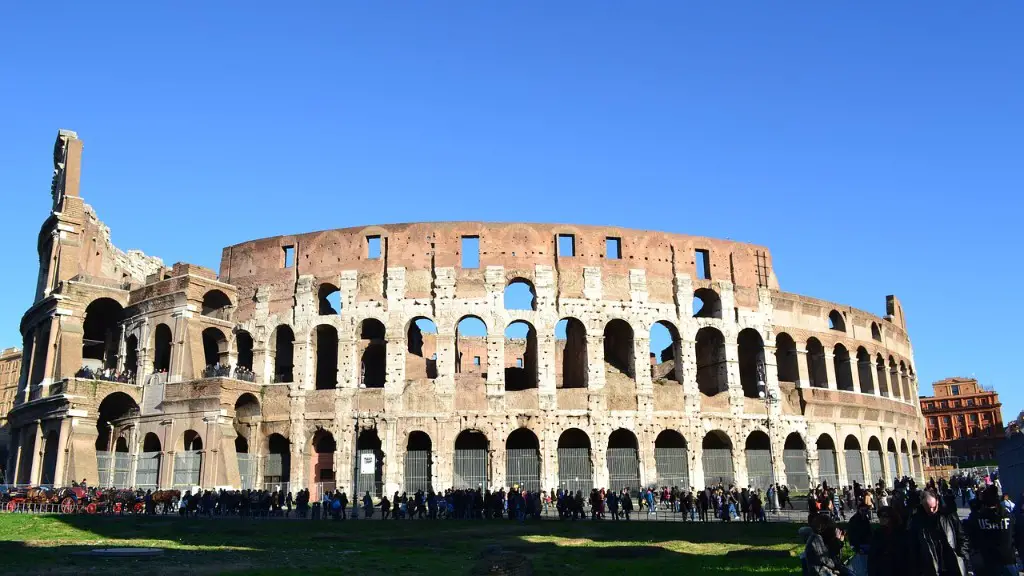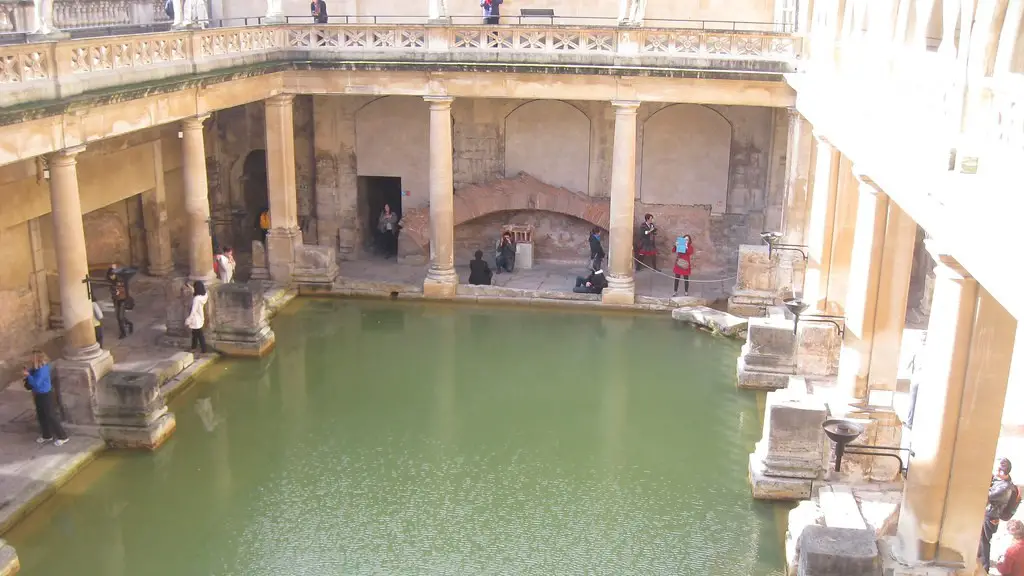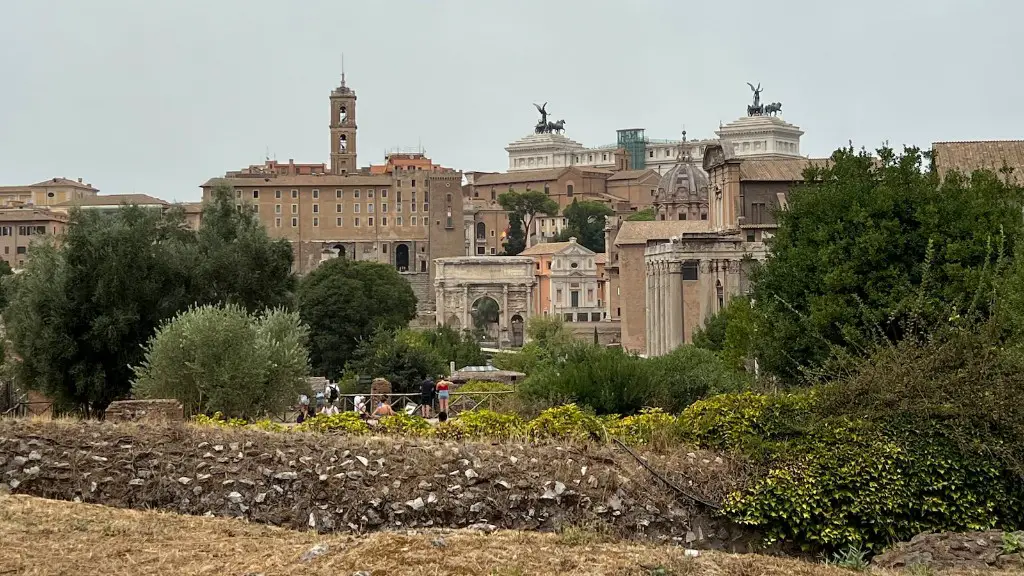Ancient Rome was one of the most powerful empires in the world for centuries. Its economy was a complex mixture of agriculture, manufacturing, trade, and money. Throughout its history, Rome was able to maintain a strong economy and build a wealthy empire. In many ways, Rome was ahead of its time with its commerce and trade. However, its economy was also greatly dependent on slavery, which was a key part of the ancient world. While Rome was not the only empire to have slavery, it was an important part of the Roman economy.
The Roman economy was quite modern for its time. It was based on private enterprise and free market principles. Prices were determined by supply and demand, and businesses competed for market share. The Roman government did not interfere with the economy or attempt to control prices. This allowed for a healthy and vibrant economy. Ancient Rome was also quite advanced in its use of money and banking. Roman coins were made of bronze and copper, and were minted to a high standard. Roman banks were able to issue loans and offer other financial services. This helped to stimulate economic activity and growth.
What was ancient Rome’s economy like?
The Roman Empire was predominantly agrarian, which means that its economy was based on agriculture. This meant that Roman landowners, agricultural laborers, and small tenant farmers were highly dependent on each other for stability.
The Roman state was able to finance its building projects through a variety of means, including the collection of taxes in currency, the growth of economic production and trade, and military victories. These sources of revenue allowed the Roman state to invest in a wide range of infrastructure projects, including the construction of roads, bridges, and aqueducts. The scale of these building projects was unprecedented in the ancient world, and helped to cement Rome’s status as a leading superpower.
How did the Roman economic system change as the empire grew
Following the Punic Wars, during the late Republic and the early Roman Empire, the economy became more monetized and a more sophisticated financial system emerged. Emperors issued coinage stamped with their portraits to disseminate propaganda, to create public goodwill, and to symbolize their wealth and power. This was an effective way to control the economy and solidify their power.
The Ancient Romans were one of the most technologically advanced civilizations of their time. They pioneered advances in many areas of science and technology, establishing tools and methods that have ultimately shaped the way the world does certain things. The Romans were extremely adept engineers. They understood the laws of physics well enough to develop aqueducts and better ways to aid water flow.
Did ancient Rome have a good economy?
The Roman economy was largely based on agriculture and slavery, which meant that it was not particularly complex compared to modern economies. The main concern of the Roman economy was feeding the vast number of citizens and legionaries who lived in the Mediterranean region. This was largely achieved through the use of slave labor, which was essential to the Roman economy.
The Roman Market Economy is a fascinating book that uses the tools of modern economics to show how trade, markets, and the Pax Romana were critical to ancient Rome’s prosperity. Peter Temin, one of the world’s foremost economic historians, argues that markets dominated the Roman economy. This is a must-read for anyone interested in ancient Rome or the history of economics.
Why did Rome’s economy grew weak?
Rome was a great empire that was falling apart from the inside. The main reasons were financial problems and internal fighting. The financial problems were caused by the government spending too much money on wars and other things. This caused high taxes and inflation, which made the rich richer and the poor poorer. The internal fighting was caused by the government being corrupt and the people not having any say in what happened. This led to a lot of unrest and eventually the fall of the empire.
The problems that led to Rome’s decline were largely due to government and economic corruption. The economy was based on slave labor, which created a large gap between the rich and the poor. The rich grew wealthy from their slaves while the poor could not find enough work. This led to unrest and eventually the decline of the Roman Empire.
What weakened the Roman economy
A combination of severe inflation, barbarian invasions, debasement of the currency, civil wars, and destruction of farms, crops and cities all forced administrators to get more taxes from people. This increased tax burden often led to resentment and rebellion, further exacerbating the already difficult situation.
Roman economic history can be divided into three major periods: the Republic (509 bce–31 bce), the principate (31 bce–c.
Each of these periods was characterized by different economic activities and different economic institutions.
During the Republic, agriculture and household production were the most important economic activities. The state also began to tax its citizens and to mint its own currency. During this period, market exchanges and slavery also began to develop.
During the principate, urbanization and trade became more important, and the state became increasingly involved in the economy. The emperors imposed laws and regulations on economic activity, and built a system of roads and waterways to facilitate trade.
During the late period of the Empire, the economy declined due to political instability and barbarian invasions. However, the state continued to play a significant role in the economy, and urbanization and trade remained important.
The economy of the Roman Empire was mostly based on agriculture, which was carried out by slaves. The primary purpose of the economy was to benefit the upper classes of society, including the landlords and the rich. The emperor also had a great deal of power and economic influence.
The Roman Empire was in a state of decline by the time of Diocletian. Commerce had all but disappeared due to a lack of customers, to piracy on the seas, and to the insecurity of the roads on land. This led to a decline in the economy and an overall deterioration of the empire.
What advances did ancient Rome have that we have today
Cement, The Aqueduct, Sanitation, Roads, Social care and welfare, Julian Calendar, Elements of surgery, Elements of the modern legal system are all important ancient Roman developments that continue to have an impact on our lives today. Each of these inventions or discoveries has had a significant impact on the world and our daily lives.
The Romans were a huge part of our history and development as a society. They introduced many things that we still use today, from fast food to advertising and trademarks. Plumbing and sanitation are also things that we owe to the Romans, as well as towns, architecture, roads, and even our calendar. Without the Romans, we would be a very different society today.
What was the most modern feature of Roman society?
2) Colonialism and Slavery: Another feature which makes the Roman society look quite modern is their colonialism and slavery. Many historians believe that these were the features which helped Rome to become a great empire.
3) Economic inequality: Roman society was quite unequal in terms of economic resources. This is again a feature which is quite common in many modern societies.
4) Religion: Roman religion was quite diverse and there was no one dominant religion. This is again a feature which is quite common in many modern societies.
The Roman mob was a group of people who were poor in wealth but strong in numbers. They relaxed in front of the popular entertainment of the time – chariot races between opposing teams, or gladiators fighting for their life, fame and fortune. Although their lives may have been different, they did have some things in common.
Why was Roman trade so successful
The Roman army made the roads and sea routes safe for traders. In turn, trade helped the economy grow. People in each area of the empire could sell what they grew or made to people in other areas who could use these goods. They could also buy things that they couldn’t produce for themselves. This trade made the empire stronger and more prosperous.
It is interesting to note that both Ancient Athens and Ancient Rome were prime examples of two of the world’s first fully functioning capitalist societies. While the Greek and Roman societies possessed diverse social hierarchies relative to modern capitalist societies, it is clear that both cultures fostered an environment in which capitalism could thrive. This is a testament to the fact that capitalism is not a recent invention, but rather a timeless system that has been present in various forms throughout human history.
Final Words
Ancient Rome’s economy was quite modern for its time. Rome was able to produce a large amount of food and other goods due to its many farms and its access to trade routes. Rome also had a large and diverse workforce that was able to produce many different types of goods.
The ancient Roman economy was quite modern for its time. Its trade networks reached far and wide, and its currency was used throughout the Mediterranean. Its tax system was quite sophisticated, and its political system was quite stable. However, its economic system was not without its problems. Its reliance on slave labor was not sustainable in the long term, and its currency was subject to inflation.
